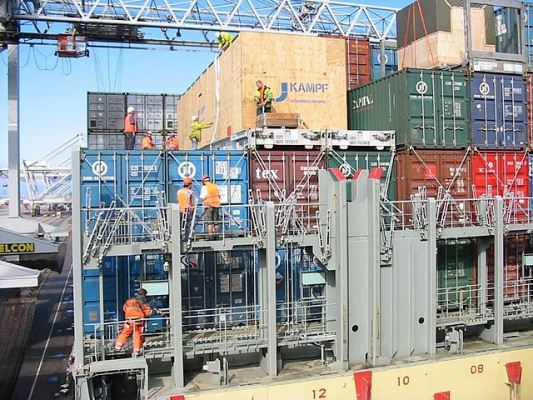Improving trade facilitation by simplifying, modernizing, and harmonizing export and import processes can reduce trade costs by up to 9% in Asia-Pacific, according to a new joint report by the Asian Development Bank (ADB) and the United Nations Economic and Social Commission for Asia and the Pacific (ESCAP).
The report highlights the benefits of better trade facilitation in the region, such as promoting customs improvements and cross-border cooperation among countries, with the implementation of the provisions under the World Trade Organization’s (WTO) Trade Facilitation Agreement (TFA) which entered into force in February of this year.
Partial implementation of the TFA could reduce trade costs in the region by 5% annually, while full implementation would yield a 9% reduction in costs—or US$219 billion of savings every year, said the report entitled “Trade Facilitation and Better Connectivity for an Inclusive Asia and Pacific.”
“Trade facilitation increases trade flows and lowers trade costs, making it critical for development in Asia and the Pacific,” said Yasuyuki Sawada, ADB’s chief economist. “We’re hopeful that the findings of the report can further help our development partners in improving trade facilitation and paperless trade implementation in the region.”
The report features findings of a global survey on trade facilitation and paperless trade implementation, revealing various improvements across the region. The region marked improvements in general trade facilitation, paperless trade, and cross-border paperless trade, with the average implementation rate rising to 50.4% in 2017 from 46.5% in 2015.
Subregionally, East Asia has the highest implementation rate at 73.7% after Australia and New Zealand (85.0%).
Digitalization, along with institutional coordination, is seen as a great tool to further enhance trade facilitation implementation and reduce trade costs. The report suggests that going fully “paperless” when implementing the measures in the WTO TFA could help reduce trade costs in the region by 16%, instead of just 9%.
“The Framework Agreement on Facilitation of Cross-Border Paperless Trade in Asia and the Pacific can accelerate implementation of digital trade procedures in the region,” said Hong Joo Hahm, ESCAP’s deputy executive secretary.
“Three countries already formally signed this new UN treaty last week: Bangladesh, Cambodia, and the People’s Republic of China. It is a promising start, and we look forward to more countries joining soon.”
The report also highlights the efforts to improve trade facilitation in major subregional cooperation initiatives like the Greater Mekong Subregion and the South Asia Subregional Economic Cooperation. In the Central Asia Regional Economic Cooperation area, for example, the report finds that a 10% reduction in time at the border could lead to an increase in trade by 2% to 3%.
The report was launched September 5 on the sidelines of the Asia-Pacific Trade Facilitation Forum in Yogyakarta, Indonesia by international finance institution ADB and ESCAP, the regional development arm of the United Nations.
Photo: Danny Cornelissen









